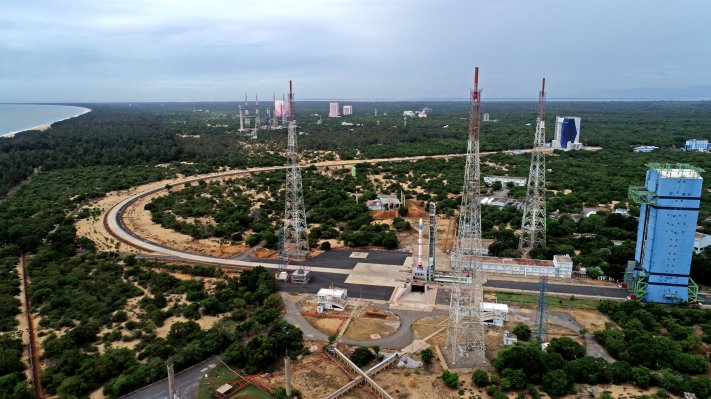First flight of India's small satellite vehicle results in loss of payload
The maiden flight of India's Small Satellite Launch Vehicle (SSLV) ended in failure when the rocket failed to insert its payloads into the target orbit.
India Space Research Organization (ISRO), the country's space agency, confirmed on Twitter that the satellites "are no longer usable" after the rocket's launch stage placed the satellites in an elliptical orbit instead than circular.
The vehicle took off from the Satish Dhawan Space Center on Sunday. In a video statement, ISRO President Shri Somanath confirmed that all three stages of the rocket had been run nominally. The rocket also has a terminal stage, the velocity trim module, which was responsible for deploying the payload. The satellites separated from this final leg about 356 kilometers away, which is when ISRO noticed the anomaly, Somanath said.
"We found that this SSLV-related issue has been reasonably identified, but we'll investigate further," he said, calling the issue a "failure of logic to identify a sensor failure" . Because the satellites were injected into an elliptical, rather than circular, orbit, they were essentially brought back into the Earth's atmosphere at the lowest point in the orbit.
"But for this problem, we could not see any other anomaly [...] All the other new elements that were incorporated into this rocket worked very well," he added. He said a committee had been formed to investigate the anomaly and provide a set of recommendations to be implemented before SSLV's second development flight.
SSLV is India's answer to the booming small satellite launch market, standing 34 meters tall and capable of lifting up to 500 kg into low Earth orbit. It is designed, according to ISRO, as a "launch on demand" solution. The vehicle carried two payloads: an ISRO-designed Earth observation satellite called Eos-02 and an 8U CubeSat carrying 75 payloads built by students in rural India.
India has a long history of developing its own launch vehicles, starting with Satellite Launch Vehicle which had its first successful mission in 1980. SSLV is India's answer to the burgeoning small satellite launch market, and it joins three other operational rockets as part of the nation's fleet.

The maiden flight of India's Small Satellite Launch Vehicle (SSLV) ended in failure when the rocket failed to insert its payloads into the target orbit.
India Space Research Organization (ISRO), the country's space agency, confirmed on Twitter that the satellites "are no longer usable" after the rocket's launch stage placed the satellites in an elliptical orbit instead than circular.
The vehicle took off from the Satish Dhawan Space Center on Sunday. In a video statement, ISRO President Shri Somanath confirmed that all three stages of the rocket had been run nominally. The rocket also has a terminal stage, the velocity trim module, which was responsible for deploying the payload. The satellites separated from this final leg about 356 kilometers away, which is when ISRO noticed the anomaly, Somanath said.
"We found that this SSLV-related issue has been reasonably identified, but we'll investigate further," he said, calling the issue a "failure of logic to identify a sensor failure" . Because the satellites were injected into an elliptical, rather than circular, orbit, they were essentially brought back into the Earth's atmosphere at the lowest point in the orbit.
"But for this problem, we could not see any other anomaly [...] All the other new elements that were incorporated into this rocket worked very well," he added. He said a committee had been formed to investigate the anomaly and provide a set of recommendations to be implemented before SSLV's second development flight.
SSLV is India's answer to the booming small satellite launch market, standing 34 meters tall and capable of lifting up to 500 kg into low Earth orbit. It is designed, according to ISRO, as a "launch on demand" solution. The vehicle carried two payloads: an ISRO-designed Earth observation satellite called Eos-02 and an 8U CubeSat carrying 75 payloads built by students in rural India.
India has a long history of developing its own launch vehicles, starting with Satellite Launch Vehicle which had its first successful mission in 1980. SSLV is India's answer to the burgeoning small satellite launch market, and it joins three other operational rockets as part of the nation's fleet.
What's Your Reaction?






















